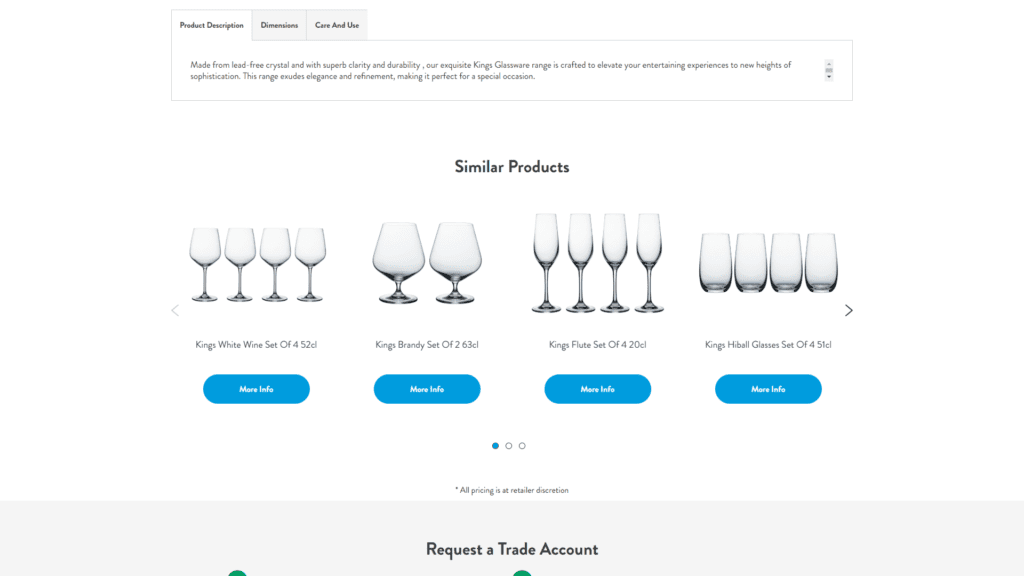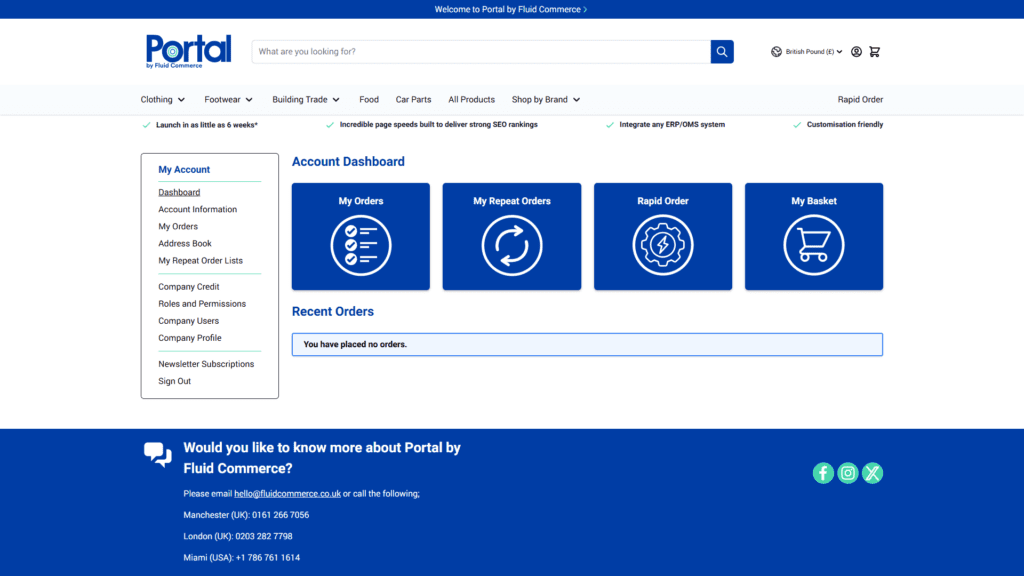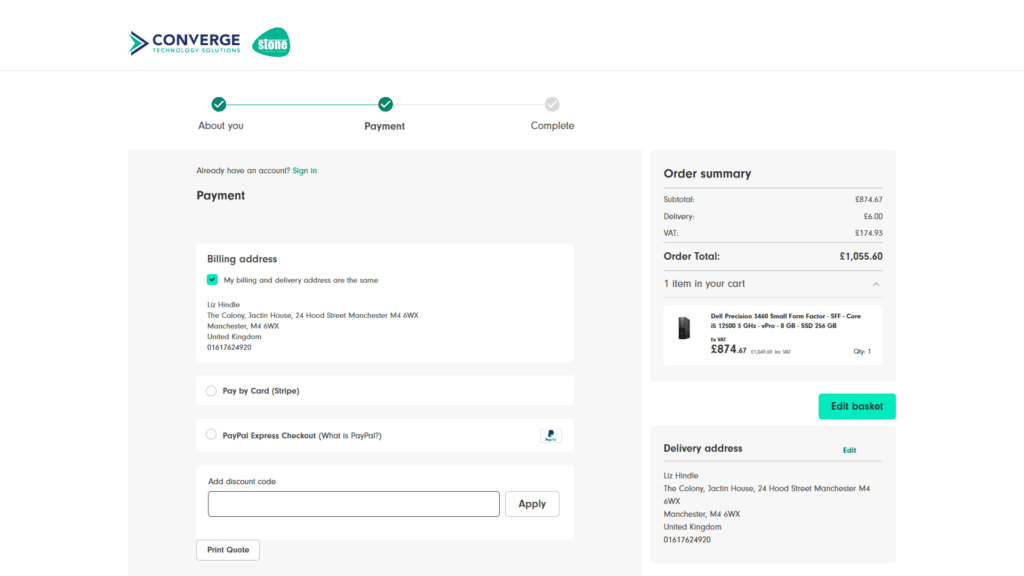B2B ecommerce is evolving at a rapid pace, with significant market growth and shifting buyer expectations over the last 12 months. Companies are now investing in personalised, intuitive, and robust digital platforms to meet the demands of a tech-savvy audience.
However, this transition is not without its hurdles, especially in an era when digital expectations demand the seamless and personalised experiences seen in B2C.
And so, with complex buyer journeys and ever-increasing demands for speed, flexibility, and security, it is vital that businesses address common challenges head-on.
In this blog post, we explore five key challenges faced by B2B companies in the ecommerce arena and provide actionable strategies to overcome them, including:
- Meeting Personalisation Demands and Buyer Expectations
- Navigating Complex Buying Processes and Managing Multiple Stakeholders
- Difficulty in Finding and Presenting the Right Products
- Inflexible Payment, Pricing, and Order Fulfilment
- Integrating Systems and Ensuring Robust Security
Challenge 1: Meeting Personalisation Demands and Buyer Expectations
The Growing Importance of Personalisation

Personalisation is no longer a luxury in B2B ecommerce – it has become a necessity. Modern buyers expect a shopping experience that mirrors the ease and sophistication of B2C platforms.
B2B buyers are drawn to websites that provide tailored catalogues, transparent pricing, and intelligent product recommendations.
However, delivering such a custom experience can be challenging when buyer needs vary across industries, organisational sizes, and even individual roles within a company.
Why it Matters
Personalisation is essential not just for attracting potential customers, but for retaining them. A digital experience that understands and adapts to the buyer’s behaviour enhances customer loyalty.
Buyers now expect adaptive search features, detailed product imagery, and responsive interfaces that cater specifically to their business requirements.
When these expectations are met, companies can enjoy longer-term relationships and higher order values.
Actionable Solutions
1. Leverage Advanced Ecommerce Platforms
Solutions like Adobe Commerce and Magento Open Source are designed with personalisation in mind.
Adobe Commerce offers a robust AI integration with Adobe Sensei, and advanced search functionalities are available for Magento Open Source from the likes of Salesfire and Klevu.
These solutions enable you to tailor product recommendations and catalogues for each user without compromising on speed or security
2. Use PORTAL for Personalisation
PORTAL, part of our B2B Accelerator service, is a prime example of a solution built to address these challenges.
PORTAL is a Hyvä-powered frontend theme that is built with flexibility in mind and can be integrated with any external systems
Among PORTAL’s many inbuilt B2B features is a function that allows businesses to offer customised pricing, and present a seamless user interface that adapts to individual buyer needs.
3. Utilise Data Analytics and AI
By investing in robust data analytics, companies can gain insights into customer behaviour and preferences.
Tools that integrate with platforms like Adobe Commerce can help you analyse transaction history and browsing patterns, enabling the creation of a highly personalised shopping experience.
This data-driven approach ensures that the right product information reaches the right buyer at the right time.
Challenge 2: Navigating Complex Buying Processes and Managing Multiple Stakeholders
The Complexity of B2B Buying Journeys
Unlike typical B2C transactions, B2B buying processes are inherently complex. A single purchase can involve numerous stakeholders – from procurement managers to technical experts and senior executives.
With each stakeholder bringing different priorities and requirements to the table, the decision-making process often extends over several months. This complexity can lead to friction in the purchasing process and can impact the overall buyer experience.
Understanding the Multi-Stakeholder Environment
To combat this challenge, it is prudent of B2B ecommerce companies to provide digital tools that simplify the complicated nature of their buyers’ purchase journeys.
There should be easy access to product information, transparent pricing, and the ability to collaborate internally before finalising a decision.
Without these features, even the most promising sales opportunities can fall through the cracks.
Actionable Solutions
1. Streamline the Approval Process
Invest in an ecommerce platform that supports role-based access and collaboration tools. By allowing multiple users to share insights and track progress through a unified dashboard, you can shorten the decision-making cycle.
Adobe Commerce, for example, offers capabilities that facilitate a smoother approval process by providing comprehensive product details and interactive quote systems.
2. Customise User Portals for Stakeholders

Develop customised portals where each stakeholder can access information relevant to their role.
PORTAL provides tailored dashboards that display the necessary data – from pricing and product specifications to order histories – in a clear and user-friendly manner.
This not only streamlines internal communication but also builds confidence in your digital sales process.
3. Implement Guided Selling and Self-Service Options
Equip your website with guided selling features and self-service options that help buyers navigate the complexity of their procurement journey.
For example, by integrating advanced search and product recommendation engines, buyers can quickly locate the products they need and compare options before escalating the purchase internally.
Challenge 3: Difficulty in Finding and Presenting the Right Products
The Challenge of Complex Product Catalogues
B2B ecommerce companies usually offer a wide range of products and services, sometimes with intricate customisation options. This vast array of offerings can overwhelm buyers who are trying to find the right product.
A unintuitive navigation or cluttered, poorly-organised catalogue not only frustrates potential customers but can also lead to lost sales opportunities.
Enhancing Product Discoverability
For these reasons, having an intuitive and adaptive product search function is crucial. Buyers expect to find products quickly, whether by searching via part numbers, keywords, or even by the specific problems they need to solve.
A system that fails to deliver precise search results can severely impact user satisfaction and conversion rates.
Actionable Solutions
1. Organise and Personalise Catalogues
Create differentiated catalogues tailored to specific buyer segments. PORTAL allows you to set category restrictions per company, ensuring that logged-in customers see the products and prices that are most relevant to them
This targeted approach improves the overall shopping experience and increases the likelihood of conversion.
2. Integrate Customised Filters and Recommendations:
Make use of customisable filters that allow buyers to narrow down options based on industry-specific criteria.
Additionally, integrating product recommendation engines can help surface related items that the buyer might find useful. Such intelligent systems not only improve discoverability but also drive cross-sell and upsell opportunities.
Challenge 4: Inflexible Payment, Pricing, and Order Fulfilment
The Payment and Pricing Conundrum
B2B transactions are unique in that they often involve negotiated pricing, multiple payment methods, and terms that differ from standard B2C purchases.
Many buyers require flexible payment options, such as Net 30 terms or invoice payments, along with the ability to negotiate customer-specific pricing. If an online platform is too rigid, it can become a barrier to completing sales.
Order Fulfilment Complexities
Order fulfilment in B2B ecommerce is another area of complexity. Distributors and suppliers frequently operate across multiple channels, and the logistics of managing large, bulk orders alongside smaller, frequent orders can be challenging.
Delays or errors in the fulfilment process can quickly erode customer trust and hurt long-term business relationships.
Actionable Solutions
1. Implement Flexible Payment Gateways

Modern B2B ecommerce platforms need to accommodate various payment options to meet buyer needs.
Adobe Commerce and Magento are well-equipped to handle complex payment scenarios by integrating with multiple payment gateways, including our preferred partner Mollie.
This ensures that buyers can choose the payment method that suits their internal processes, from credit cards to invoice-based payments.
In addition, PORTAL supports “Pay On Account” for admin approved companies.
2. Customised Pricing Models
A flexible pricing strategy is crucial for B2B companies. Use platforms that support tiered pricing, volume discounts, and customer-specific deals.
PORTAL is designed to help you manage and display tailored pricing models easily, ensuring that your pricing strategy aligns with each customer’s expectations.
3. Streamline Order Fulfilment Processes
To improve order fulfilment, integrate your inventory management systems with your ecommerce platform. This allows for real-time tracking of stock levels across multiple channels, reducing the risk of stockouts or overstocking.
Combining these systems with automated order processing also helps to eliminate manual errors and speeds up delivery times. By doing so, you can provide a more reliable and efficient fulfilment process that meets the high standards expected by B2Bbuyers.
Challenge 5: Integrating Systems and Ensuring Robust Security
The Integration Challenge
B2B ecommerce operations often rely on a multitude of systems – from customer relationship management (CRM) and enterprise resource planning (ERP) to specialised procurement tools and payment gateways.
Integrating these disparate systems into a seamless whole is no small feat. Without effective integration, data can become siloed, leading to inefficiencies and errors that disrupt the customer experience.
Security: A Paramount Concern
At the same time, the security of your ecommerce platform is paramount. With sensitive customer data, including financial details and proprietary product information, safeguarding your digital infrastructure against cyber threats is critical.
A breach can not only damage your reputation but also result in significant financial losses and legal complications.
Actionable Solutions
1. Adopt a Modern, Composable Architecture
Adobe Commerce and Magento are designed to integrate smoothly with other business systems. Their flexible, modular architecture allows you to connect your ERP, CRM, and other tools seamlessly.
PORTAL’s flexibility means that these solutions can be integrated effortlessly into your site.
2. Invest in Robust Security Measures
Security features such as encryption, multi-factor authentication, and regular vulnerability assessments are vital. Choose an ecommerce platform that comes with enterprise-level security protocols.
Moreover, consider partnering with cybersecurity experts who can help you design and implement a comprehensive security strategy that safeguards every aspect of your digital ecosystem.
3. Regularly Update and Monitor Your Systems
Integration and security are not set-it-and-forget-it tasks. Regular updates, ongoing monitoring, and routine audits are essential to maintaining the integrity of your systems.
Leverage a development support agency and automated tools for continuous monitoring and alerting, ensuring that any potential issues are identified and addressed before they escalate.
FAQs - Common Ecommerce Challenges for B2B Companies
Why is personalisation so important in B2B ecommerce?
Personalisation in B2B ecommerce creates a shopping experience that is tailored to the specific needs of each buyer.
It enhances customer loyalty and drives higher conversion rates by providing relevant product recommendations, customised catalogues, and transparent pricing.
Advanced platforms like Adobe Commerce and Magento Open Source help facilitate this level of personalisation.
How can B2B companies simplify complex buying processes?
Simplifying complex buying processes involves streamlining approval workflows and providing role-based access through customised user portals.
By implementing guided selling and self-service options, companies can reduce friction in the purchasing journey.
What strategies can be used to improve product discoverability?
To improve product discoverability, businesses should invest in AI-driven search technologies and organise their product catalogues into clearly defined segments.
Customisable filters, intelligent search algorithms, and personalised product recommendations help buyers find the products they need quickly and efficiently.
How can flexible payment and pricing be managed in B2B ecommerce?
Flexible payment and pricing can be managed by integrating diverse payment gateways and implementing customer-specific pricing models.
Platforms like Adobe Commerce and Magento support tiered pricing, volume discounts, and flexible payment terms.
Additionally, PORTAL facilitates the display and management of these custom pricing models on your website. It also offers ‘pay on account’ functionality.
What are the best practices for integrating systems and ensuring security?
The best practices for integration involve using modern, composable architectures that allow seamless connectivity between your CRM, ERP, and other business systems.
For security, it is crucial to implement robust measures such as encryption, multi-factor authentication, and continuous system monitoring.
Choosing platforms with strong enterprise-level security protocols can help ensure your digital infrastructure is both integrated and secure.
Next steps
As companies strive to meet the high expectations of modern buyers, the challenges facing B2B ecommerce companies become ever more critical.
However, by understanding these challenges and implementing the right strategies, businesses can transform obstacles into opportunities for growth.
By investing in advanced platforms like Adobe Commerce and Magento, and utilising a ready-for-launch service such as the Fluid Commerce B2B Accelerator, companies can not only meet but exceed customer expectations.
For B2B companies, the key is to stay agile, continuously innovate, and place the customer experience at the centre of every decision. With the right tools and strategies in place, the challenges of modern ecommerce can be effectively managed, paving the way for enhanced customer satisfaction and sustained business growth.
For help with developing or supporting your B2B ecommerce website, contact the Fluid Commerce team here.






